Orpheum No.1 Tenor Banjo
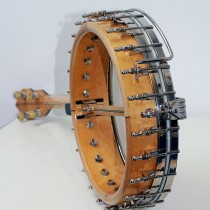
orpheum_1
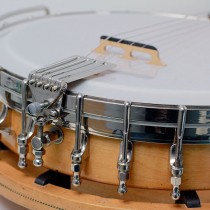
orpheum_10
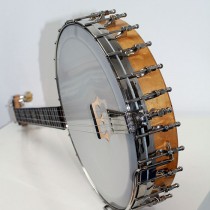
orpheum_2
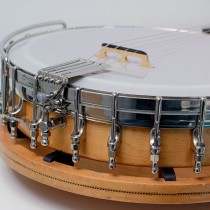
orpheum_3
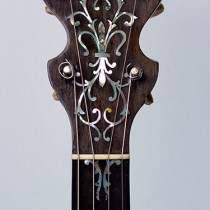
orpheum_4
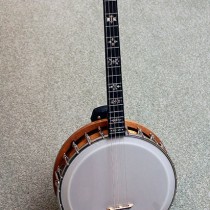
orpheum_5
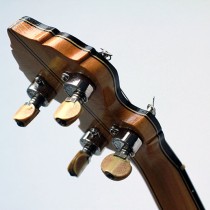
orpheum_6
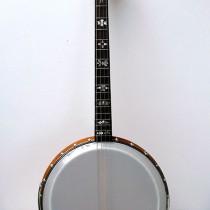
orpheum_7
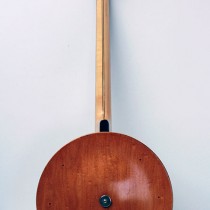
orpheum_8
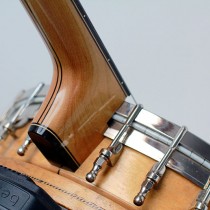
orpheum_9
It’s rare to find an 80 year old instrument in pristine condition as seen from the laquer on the woodwork and nickel plating throughout. Made around 1933 by the Rettburg & Lange Company who built the famous Paramount banjos the build is all quality, nice heavy-duty hard maple rim with fancy veneers as well as a good maple “rim cap” on the bottom. flamed-maple 3-piece neck with bound dyed-hardwood (having the two vertical laminates of pearwood for strength) 21″ scale fretboard and detailed multi-layer headstock veneer, the inlay positions are fanciful symmetrical decorations made up of impressionistic birds and flourishes of flora. It has a nut width of 1 1/8th”, a fingerboard width at 7th fret of 1 5/16″ and at the last fret the fingerboard measures 1 1/2″. The machine head tuners are mini geared page type not normally found on the No.1 models. The instrument is loaded with the big old Orpheum-style archtop tonering which is seated on flattened stud appendages that then connect to the outer sleeve where the edge of the head is mounted. This whole contraption is half of what gives the Orpheums their magical sound — a projecting, clucky, bright but warm tonality with overtones and sustain that complements rather than detracts from the overall sound.
Usually fitted with a no knot tail piece this Orpheum is fitted with a Kershner tailpiece probably some years ago. The length, weight and machined brass construction of these tail pieces enhance note sustain and contribute to clear, bright tone.
This little banjo is a dream to play with low action and well suited for a fiddler or mandolin player wishing to move onto a new instrument. The banjo comes with its original case in good condition and a spin on nickel plated resonator (has a few dents). I have added a non-original vintage flat blonde maple resonator which suits the appearance of the banjo and helps excel the sound from the pot. This is easily removed as it is attached with a centre blade screw. So the banjo can be played as an open back, metal resonator or wooden resonator option.
Sold: